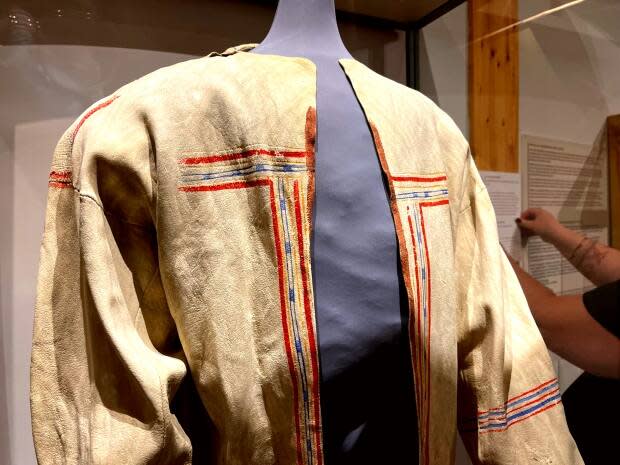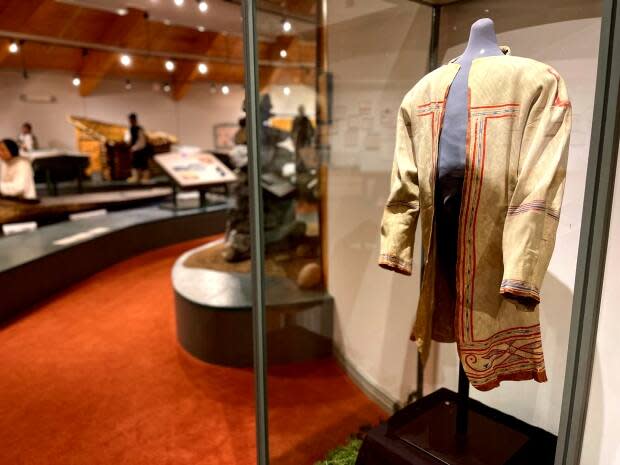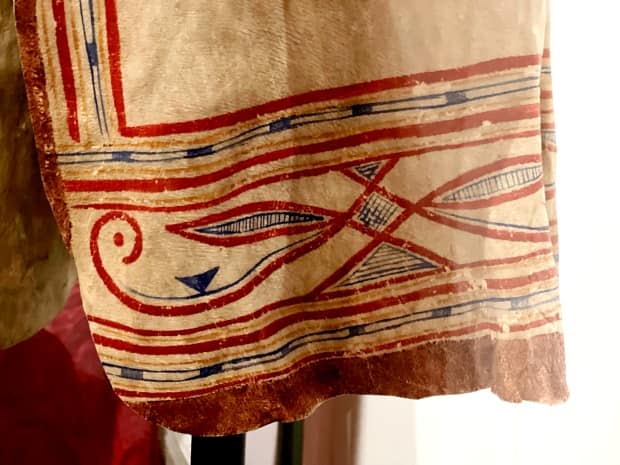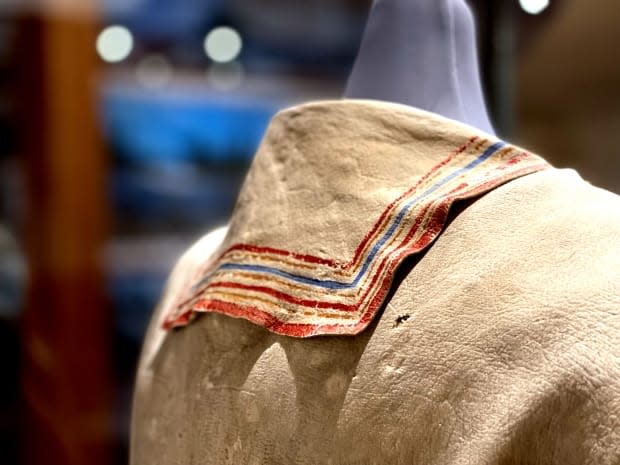Rare caribou coat returned to Innu Nation after being found in freezer across the river

An Innu coat is now on display in Labrador, more than a century after being made and after decades of sitting in a freezer.
The caribou-skin coat now hangs in the Labrador Interpretation Centre in North West River, in central Labrador. It was discovered after a Labrador Morning piece covered a cultural guardian's journey to repatriate items.
"CBC actually did an interview on my tattoo that I had got, and then a story about the caribou painted coat," said Jodie Ashini, cultural guardian with Innu Nation.
"After that aired, someone messaged me and said 'did you know that they have one at the Heritage Museum?'"

Ashini said she was taken aback that a precious artifact was tucked away so close. She contacted the museum and asked about it. After a couple weeks, they confirmed the coat had been stored in a freezer to preserve it.
She drove down and took a look, inspecting the painted markings and its date: 1905. It's not as elaborate as some of the ones she's working to repatriate from the Canadian Museum of History in Gatineau, Que., so this one may have been for a woman or child, Ashini said.
"Someone that wasn't going to go hunting, that didn't need the special powers behind the coat. The coat was made so that it would please the Caribou Master so that we could have a successful hunt. And after an extensive successful hunt, the coats were hung outside as a thank you," Ashini said.
The group would then go inside the tent that the coats surrounded and break the caribou legs to get the marrow, in a ceremony to thank the Caribou Master — the most powerful of all spirits in the Innu spiritual world.
"We believed that everything had a spirit, that you must respect all spirits in order to continue to get and prosper," Ashini said.

Heritage society froze coat to help preserve it
The Labrador Heritage Society had been keeping the coat since around the 1980s. Ernie McLean, president of the society, said they were advised in the past to keep it in the freezer to preserve it from bugs, heat and damage.
Now and then, people would carefully remove it to inspect it but they were unsure of any other ways to preserve it.
After finding out where it originated from and how to preserve it on display, McLean said they immediately worked to repatriate the coat.

"Historical archives and objects should be placed where they have the most meaning, and the most meaning would be for the Innu because it was made by them," McLean said. "It has great meaning to us."
'It's in really great, great shape for how old it is. We're very lucky," Ashini said of the condition.
The colours are still vibrant as well. The red was painted with red ochre, a natural clay combined with animal fat, the yellow is believed to have been fish eggs mixed with animal fat, and the blue is from blueberries mixed with animal fat, Ashini said.

"They made sticks with three prongs so you could draw along and have three equal lines. They are very beautiful, beautifully done, very intricately done by the women."
Ashini said repatriating these items is more important than most people can understand. It's something she'd dedicated her life to and wanted to do since she was a child who was able to learn from the land, thanks to her father.
She hopes children are able to learn from the coats as well and recreate them in the future cultural centre. Ashini said connecting them to their culture also brings them identity and helps with societal problems. She said she's very thankful and emotional to have it on display.
"Schools are already booked up to see it tomorrow. And that's just an amazing feeling. These kids are going to see something from a hundred years ago that hasn't been made and it's not being made anymore," she said. "It's a very important thing to us."



